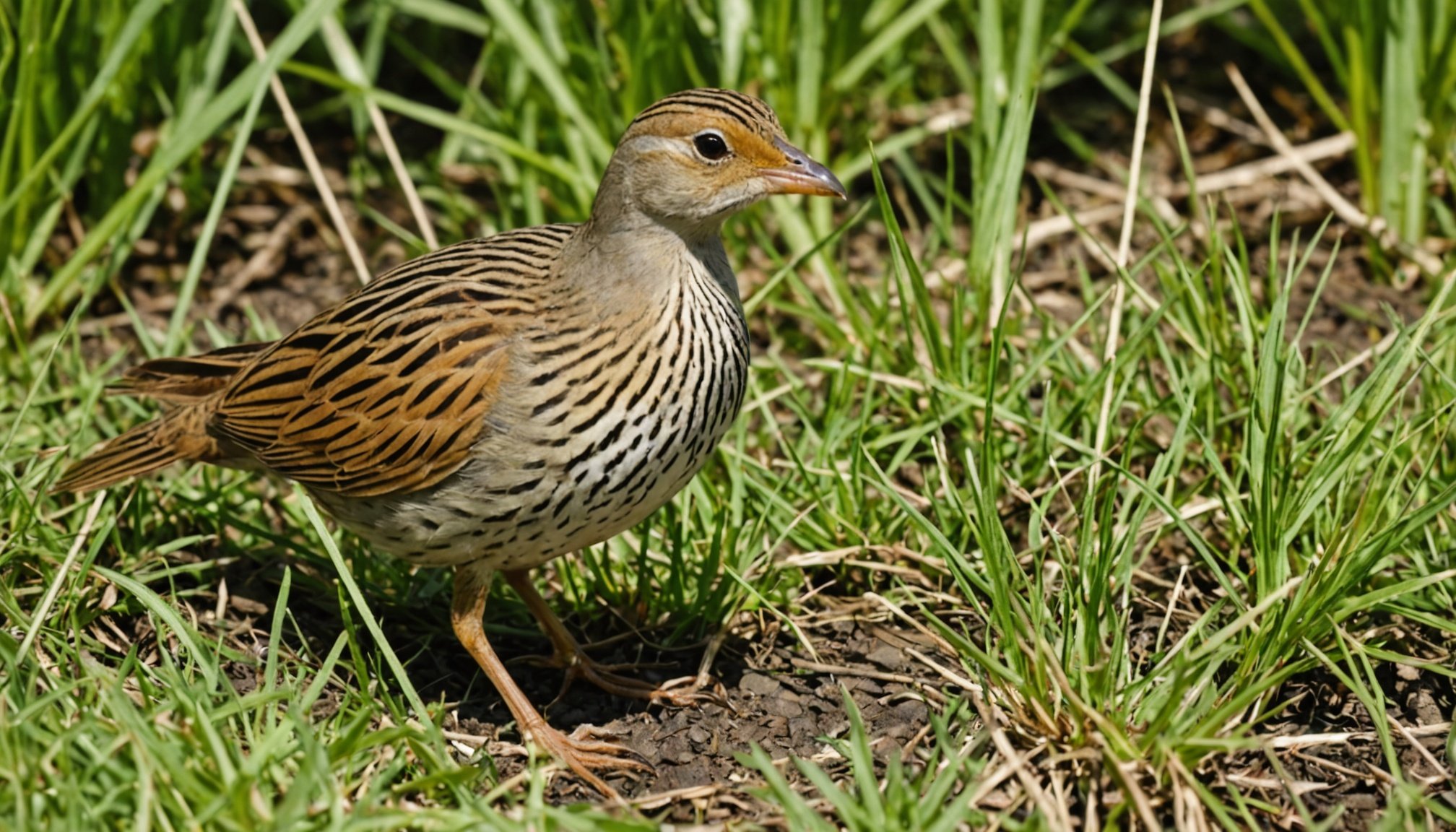Overview of the Corncrake’s Conservation Status
The corncrake faces a challenging conservation outlook, with population numbers witnessing a worrying decline, particularly in the UK. Once a common sight, the corncrake’s population has plummeted due to modern agricultural practices, which destroy its nesting grounds. Harsh mowing techniques and loss of natural tall grasslands important for nesting significantly threaten this endangered species.
The steady decline of the corncrake is exacerbated by climate change, further altering the bird’s habitat and reducing breeding success rates. To combat this, conservation organisations focus on habitat restoration as a priority for reversing these trends. Protecting existing habitats while improving land management is crucial for stabilising the corncrake’s population.
This might interest you : Exploring the effects of climate change on coastal bird populations in the uk: a deep dive into the consequences
Corncrakes are a key component of the UK’s ecosystem, known for their unique croaky calls that contribute to the natural soundscape and biodiversity. Their presence indicates healthy ecosystems, as they partake in insect population control, aiding in maintaining ecological balance. The corncrake’s survival reflects broader conservation successes or failures, underscoring its importance within the environmental fabric of the region.
Understanding the complex interplay of threats is vital for devising effective conservation strategies and ensuring the corncrake’s return to a thriving status in its natural habitat.
In parallel : Mastering rare bird sightings in the uk: the ultimate guide with essential tips and best practices
Role of UK Zoos in Conserving the Corncrake
UK zoos play a critical role in corncrake conservation, leveraging zoo breeding programs to address the decline in this endangered species. Efforts focus on cultivating robust breeding pairs and maintaining genetic diversity, essential for long-term species survival. These programs serve as a safeguard against population collapse, while enabling controlled environments for scientific studies and breakthroughs in bird hatching and rearing techniques.
The significance of zoos extends beyond breeding alone. Through species conservation, zoos contribute to comprehensive rehabilitation efforts that integrate with broader environmental strategies. They are pivotal in creating awareness and fostering a culture of responsibility towards endangered avian species, encouraging the public to value their conservation.
Collaboration stands out as a cornerstone, with zoos working hand-in-hand with conservation organisations. This synergy enables sharing of resources, expertise, and scientific developments to maximise the success rates of species conservation programs. Such partnerships ensure a unified approach to tackling challenges, optimising habitat restoration, and facilitating the reintroduction of corncrakes into their natural habitats.
In essence, UK zoos are not just shelters for species but active participants in a global movement to protect and conserve the corncrake, ensuring its call continues to echo in the UK landscape.
Insights from Conservationists on Corncrake Breeding
Conservationists provide valuable insights into corncrake breeding underlining its importance within the broader framework of species conservation. Their analyses show that extensive, scientifically-backed breeding programs are indispensable, especially given the corncrake’s endangered status. Expert opinions suggest that without such interventions, natural populations may fail to recover adequately, reinforcing the need for careful habitat restoration.
The SQuAD method helps answer critical questions regarding breeding effectiveness. For instance, “Why is captive breeding necessary for corncrakes?” Answer: It maintains genetic diversity and population numbers, bolstering reintroduction efforts. Conservation experts agree that integrating these bred individuals into wild settings fosters a more stable, viable population.
Strategically, it involves not just breeding success but deploying long-term plans ensuring acclimation to natural habitats. Discussions with experts reveal that despite challenges, this approach is integral for reversing bird population decline. Data highlights the potential of these strategies, showing significant contributions towards maintaining ecological balance by controlling insect populations naturally.
In conclusion, conservationists emphasize that while challenges exist, the proactive steps currently being taken are crucial. Supporting these initiatives is essential for preserving this distinct species and, by extension, the biodiversity and health of ecosystems.
Case Studies of UK Zoo Breeding Initiatives
Efforts by UK zoos in corncrake conservation have yielded notable successes through strategic breeding programs. These programs aim to address challenges in sustaining the corncrake population by focusing on species conservation and habitat restoration.
Zoo A Initiatives
Zoo A’s initiatives have centered around meticulously crafted breeding programs tailored for corncrakes. These programs, under strict scientific guidance, have successfully increased local corncrake populations. Through collaboration with environmental experts, Zoo A has contributed to significant habitat restoration benefiting not just corncrakes but the broader ecosystem.
Zoo B Contributions
Zoo B has approached corncrake conservation with innovative breeding strategies. By honing in on genetic diversity and successful rearing, they’ve achieved commendable success. Beyond breeding, Zoo B actively engages the public, fostering education and awareness on the importance of protecting endangered species like the corncrake.
Challenges Faced by Zoos
Nonetheless, the process is fraught with challenges. Primary concerns include meeting specific habitat requirements and adapting environmental conditions for breeding success. Zoos must tackle issues like maintaining optimal grassland environments suitable for nesting, ensuring these precious birds can thrive both in captivity and upon release into the wild.
The Impact of Breeding Programs on Biodiversity
Corncrake breeding programs play a crucial role in promoting biodiversity conservation. By stabilising corncrake (Crex crex) populations, these programs contribute significantly to species reintroduction and bolster ecological balance. This is achieved through strategic breeding efforts that not only enhance population numbers but also maintain genetic diversity, making corncrakes more resilient in their natural habitats.
In addressing the question, “How do these breeding programs benefit biodiversity conservation?” Answer: They aid in sustaining ecosystems by reintroducing corncrakes, which help control insect populations and maintain ecological stability. This supports the health of ecosystems where these birds naturally thrive.
Moreover, the reintroduction of bred corncrakes into their natural environments helps restore species diversity, a critical factor in preserving ecological balance. This diversity ensures ecosystems can function effectively, supporting various plant and animal life.
The impact on biodiversity conservation extends beyond individual species. These programs illustrate the interconnectedness of species within ecosystems, highlighting the importance of each component in a balanced environment. By focusing on corncrake conservation, breeding programs not only aim to save a species but also enhance the ecological integrity of the regions they inhabit.









